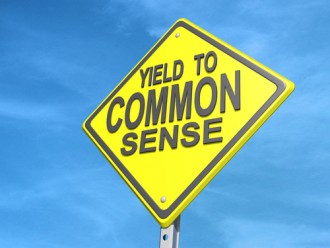
December 2, 2009
Claims To Methods Of Managing Bulk E-Mail Distribution To Groups Of Targeted Consumers Obvious Based On “Common Sense”
Federal Circuit affirms grant of summary judgment by the U.S. District Court for the Southern District of Florida, agreeing that the asserted claims for an email distribution system were invalid as based on the application of “common sense.”
Perfect Web Techs., Inc. v. InfoUSA, Inc., No. 2009-1105 (Fed. Cir. Dec. 2, 2009)
Perfect Web Techs. asserted infringement of U.S. Patent No. 6,631,400, which issued from an application filed on April 13, 2000. Claim 1 was deemed representative:
1. A method for managing bulk e-mail distribution comprising the steps:
(A) matching a target recipient profile with a group of target recipients;
(B) transmitting a set of bulk e-mails to said target recipients in said matched group;
(C) calculating a quantity of e-mails in said set of bulk e-mails which have been successfully received by said target recipients; and,
(D) if said calculated quantity does not exceed a prescribed minimum quantity of successfully received e-mails, repeating steps (A)-(C) until said calculated quantity exceeds said prescribed minimum quantity.
On InfoUSA’s motion for summary judgment, the District Judge concluded that (a) claim 1 would have been obvious because steps (A)–(C) appear in the prior art and step (D) “would have been obvious to virtually anyone”, (b) claim 1 was anticipated under 35 U.S.C. § 102(b) by prior art, and (c) claim 1 does not constitute patentable subject matter under 35 U.S.C. §101 because it was “merely a series of algorithms.”
On appeal, the patentee argued that there are factual disputes as to whether “common sense” would have taught step (D), and the long-felt need for the claimed invention.
After noting the obviousness analysis “may include recourse to logic, judgment, and common sense available to the person of ordinary skill that do not necessarily require explication in any reference or expert opinion,” the Federal Circuit also stated that this does not relax the requirement that the Court’s analysis still must be explicit. In this case, the Federal Circuit felt the invocation of common sense with respect to step (D) was appropriate because, as the District Court explained, it merely involves repeating the previous steps (“a known procedure”) until success is achieved. Based on similar reasoning, the Federal Circuit also found that step (D) was obvious to try, because, in the words of the Supreme Court in KSR, there were a “finite number of identified, predictable solutions” to the problem step (D) rectifies.
Finally, the Federal Circuit rejected the argument that the claims met the long-felt need for an efficient bulk email system. First, there was insufficient evidence as to how long this “need” had been felt. Second, the evidence failed to show how the claims met this need. Accordingly, the patentee’s arguments failed to raise a genuine issue of material fact.
Based on its finding of obviousness, the Federal Circuit did not address the issues of whether the asserted claims were anticipated or directed to unpatentable subject matter.





































